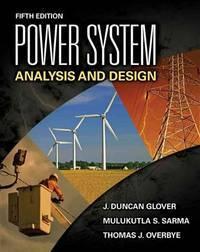High Voltage Direct Current (HVDC) applications embedded within ac power system grids have many benefits. A bipolar
Question:
High Voltage Direct Current (HVDC) applications embedded within ac power system grids have many benefits. A bipolar HVDC transmission line has only two insulated sets of conductors versus three for an ac transmission line. As such, HVDC transmission lines have smaller transmission towers, narrower rights-of-way, and lower line losses compared to ac lines with similar capacity. The resulting cost savings can offset the higher converter station costs of HVDC. Further, HVDC may be the only feasible method to:
(1) interconnect two asynchronous ac networks; (2) utilize long underground or underwater cable circuits; (3) bypass network congestion; (4) reduce fault currents; (5) share utility rights-of-way without degrading reliability; and (6) mitigate environmental concerns. The following article provides an overview of HVDC along with HVDC applications [6].
A. For underground and underwater transmission, why are line losses for HVDC cables lower than those of ac cables with similar capacity?
B. Where are back-to-back HVDC converters (back-to-back HVDC links) currently located in North America? What are the characteristics of those locations that prompted the installation of back-to-back HVDC links?
C. Which HVDC technology can independently control both active (real) power flow and reactive power flow to and from the interconnected ac system?
Step by Step Answer:

Power System Analysis And Design
ISBN: 9781111425777
5th Edition
Authors: J Duncan Glover, Mulukutla S Sarma, Thomas Overbye





